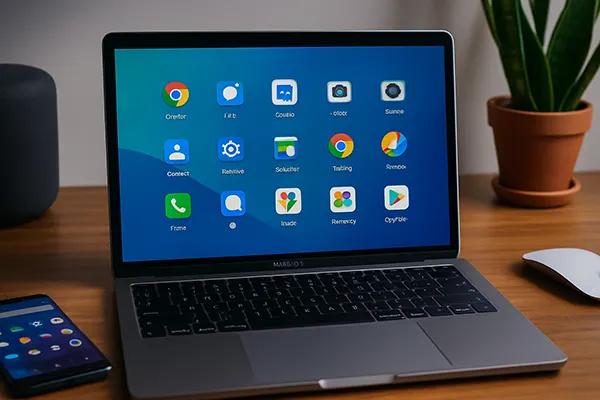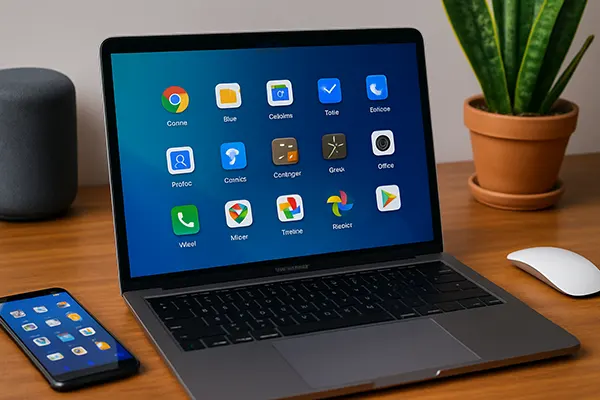Waydroid on macOS: How to Get Native Android Without Emulators

Running Android applications natively on macOS has always been a complex task, often requiring clunky and resource-intensive emulators. However, as of February 2025, Waydroid offers a groundbreaking solution that allows users to experience native Android performance on their Mac devices without the drawbacks of traditional emulation. In this guide, we explore how Waydroid works, its installation process, and why it is becoming the go-to choice for tech enthusiasts.
Understanding Waydroid and Its Advantages on macOS
Waydroid is an open-source project that allows Android to run as a native container inside a Linux-based system. On macOS, this is achieved by utilising lightweight virtualisation techniques, ensuring seamless performance without the overhead associated with typical emulators like Bluestacks or Nox. Unlike those solutions, Waydroid does not replicate the entire hardware stack, making it faster and significantly more efficient.
Another major advantage is the integration with the macOS ecosystem. Waydroid enables smoother interactions between Android apps and macOS-native features. Clipboard sharing, file transfer, and window management become straightforward tasks, elevating productivity for developers and power users alike. This tight integration is one of the reasons why Waydroid is gaining popularity among macOS users who require robust Android access.
Moreover, the security model of Waydroid ensures a safer environment compared to traditional emulators. By leveraging isolated containers and system permissions, users can control what resources Android apps can access. This minimises vulnerabilities and offers peace of mind for those running sensitive applications or handling personal data.
System Requirements and Preparations for Installation
Before diving into installation, it is essential to ensure your Mac meets the necessary prerequisites. First, macOS must be updated to at least version 13 (Ventura or later) to support the virtualisation framework. Second, your Mac should have an Apple Silicon chip (M1, M2, or M3 series) for optimal performance, although Intel-based Macs are also supported with some limitations.
In addition to hardware and OS requirements, installing Homebrew and setting up UTM or a similar virtualisation tool is critical. Homebrew simplifies the installation of necessary packages, while UTM provides an efficient way to run Linux VMs. It is also advisable to allocate sufficient disk space—at least 20 GB—for the Linux container that will host Waydroid.
Finally, ensure that security settings on your Mac allow the execution of unsigned software if needed. Some components of the Waydroid setup might not be notarised by Apple, requiring temporary adjustments to your Gatekeeper preferences during the installation process.
Installing Waydroid on macOS: A Step-by-Step Guide
To begin the installation, start by downloading and installing a lightweight Linux distribution via UTM. Ubuntu 22.04 LTS is a commonly recommended choice due to its stability and compatibility with Waydroid. After setting up Ubuntu, the next step is to install Waydroid itself within the virtualised environment using terminal commands provided by the Waydroid documentation.
During installation, make sure to enable nested virtualisation if available, as it improves Android’s performance inside the Linux container. You will also need to install necessary dependencies such as LXC (Linux Containers) and configure Waydroid settings to suit your usage—whether for app development, gaming, or general Android usage on macOS.
Once installed, Waydroid can be started through a simple terminal command or automated to launch on Linux startup. From there, you can enjoy Android applications natively, with full access to the Google Play Store after installing appropriate Google services manually if needed.
Optimising Performance and Troubleshooting Common Issues
Performance tuning is key to a seamless experience. Allocate more RAM and CPU cores to the Linux virtual machine if your Mac has sufficient resources. This adjustment dramatically enhances app responsiveness and multitasking capabilities inside Waydroid.
In case of graphical glitches or app crashes, updating GPU drivers within Linux or adjusting Waydroid’s graphic settings (such as using different renderers) often resolves issues. Ensuring that you have the latest version of Waydroid and its dependencies also helps maintain stability and compatibility with newer Android applications.
Connectivity problems, such as networking inside Waydroid, can be fixed by configuring UTM’s network settings to use shared networking modes. In complex cases, creating a bridged network for the virtual machine ensures better app behaviour, especially for services that rely on constant internet connectivity.

Why Waydroid Is the Future for macOS Users
As demand grows for seamless cross-platform functionality, Waydroid presents a forward-thinking solution that empowers Mac users to expand their digital capabilities without compromise. The project’s open-source nature ensures continual improvements, bug fixes, and feature additions led by a passionate community.
Waydroid’s compatibility with Android 13 and newer versions makes it an ideal solution not just for developers, but also for testers and general users who need access to the latest Android features without buying separate hardware. It offers an ideal environment for running mobile apps that are not available on macOS, closing the gap between the two ecosystems.
Furthermore, companies are beginning to explore Waydroid as a way to streamline mobile app development pipelines. By providing developers with the ability to build and test Android apps directly on macOS, it eliminates the need for complex and often unreliable emulation setups, boosting productivity significantly.
Future Prospects and Community Support
Looking ahead, Waydroid’s developers plan to improve native macOS support, potentially eliminating the need for an intermediate Linux VM altogether. There are also discussions about enhancing GPU passthrough support, which would bring even better graphics performance for gaming and multimedia applications.
The vibrant community around Waydroid ensures that users have access to up-to-date documentation, forums, and troubleshooting support. Whether you are a casual user or an enterprise developer, Waydroid’s evolving landscape promises continual innovation and more seamless integration with macOS over time.
In conclusion, if you are a Mac user seeking a reliable, secure, and high-performance Android experience without the typical emulator headaches, Waydroid stands out as the most promising solution available in 2025. With active development and strong community backing, its future looks very bright indeed.
